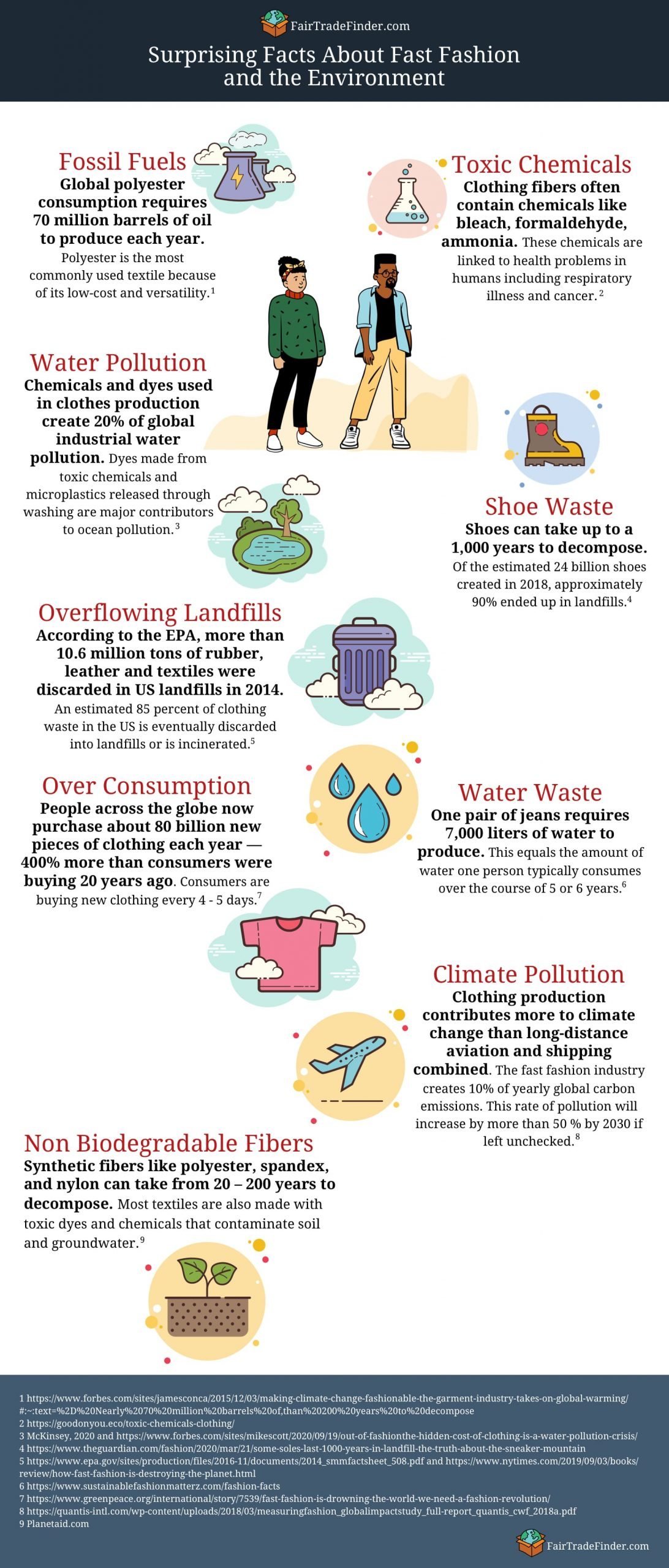9 Surprising Facts About Fast Fashion and the Environment
The average consumer shopping for clothing and shoes does not consider the unseen factors that are involved in producing the objects we buy.
The natural environment is tremendously and negatively affected by our modern modes of “fast fashion”. Yet, people often do not take into account that each article of clothing has untold consequences for our land usage, air pollution and water consumption.
In an effort to bring they issues to the forefront, below are 9 surprising and important facts on how fast fashion affects the natural environment.
1. Fossil Fuels
Global polyester consumption requires 70 million barrels of oil to produce each year. Polyester is the most commonly used textile because of its low-cost and versatility. – Forbes
2. Toxic Chemicals
Clothing fibers often contain chemicals like bleach, formaldehyde, ammonia. These chemicals are linked to health problems in humans including respiratory illness and cancer. – Good On You
3. Water Pollution
Chemicals and dyes used in clothes production create 20% of global industrial water pollution. Dyes made from toxic chemicals and microplastics released through washing are major contributors to ocean pollution. – Forbes
4. Shoe Waste
Shoes can take up to a 1,000 years to decompose. Of the estimated 24 billion shoes created in 2018, approximately 90% ended up in landfills. – The Guardian
5. Overflowing Landfills
According to the EPA, more than 10.6 million tons of rubber, leather and textiles were discarded in US landfills in 2014. An estimated 85 percent of clothing waste in the US is eventually discarded into landfills or is incinerated. – Environmental Protection Agency
6. Water Waste
One pair of jeans requires 7,000 liters of water to produce. This equals the amount of water one person typically consumes over the course of 5 or 6 years. – Sustainable Fashion Matterz
7. Over Consumption
People across the globe now purchase about 80 billion new pieces of clothing each year — 400% more than consumers were buying 20 years ago. Consumers are buying new clothing every 4 – 5 days. – Greenpeace
8. Climate Pollution
Clothing production contributes more to climate change than long-distance aviation and shipping combined. The fast fashion industry creates 10% of yearly global carbon emissions. This rate of pollution will increase by more than 50 % by 2030 if left unchecked. – House of Common Environmental Audit Committee
9. Non Biodegradable Fibers
Synthetic fibers like polyester, spandex, and nylon can take from 20 – 200 years to decompose. Most textiles are also made with toxic dyes and chemicals that contaminate soil and groundwater. – Planetaid
Tags: Fast Fashion







